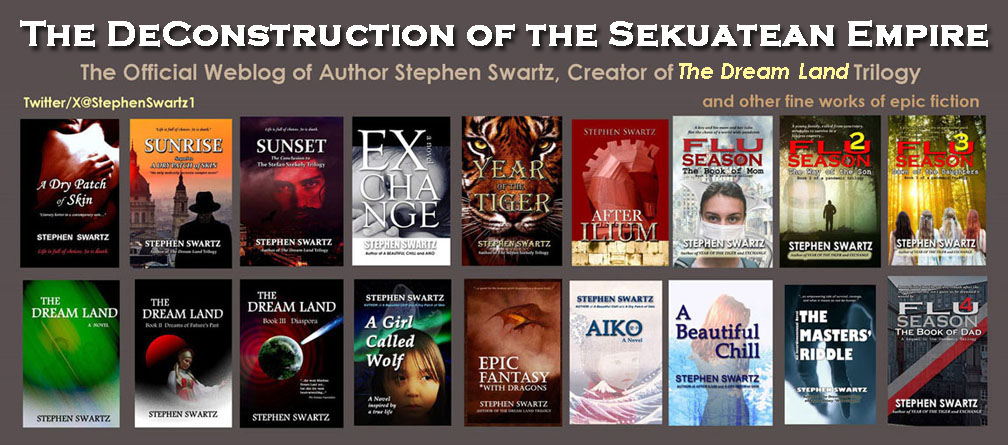 The good news* is that some of us have been given permission to return to our usual way of life, our old habits, the normal things we are used to doing. For me, that includes the launching of my latest novel, EXCHANGE, which has been delayed because of the changing circumstances of life in general. I lovingly describe it as a crime thriller because it involves a big crime followed by on-going crimes and the main character has to keep trying to deal with the cascade of trouble. Mostly it's about the issue of gun violence in America. (More on that touchy subject next time.)
The good news* is that some of us have been given permission to return to our usual way of life, our old habits, the normal things we are used to doing. For me, that includes the launching of my latest novel, EXCHANGE, which has been delayed because of the changing circumstances of life in general. I lovingly describe it as a crime thriller because it involves a big crime followed by on-going crimes and the main character has to keep trying to deal with the cascade of trouble. Mostly it's about the issue of gun violence in America. (More on that touchy subject next time.)*The bad news, by the way, is that some of us haven't yet been given permission - as though we are in kindergarten and need to ask the teacher for permission to go by ourselves to the restroom!
For this week, I need to rush headlong into the next step in my writing process, a process I paid attention to while writing EXCHANGE, just so I could tell you about it.
Part 5
When
I'm heading into the middle of the book, it is subplot time. Some of those are
already part of the original idea, the obstacles the protagonist must overcome.
Others are just some seeds I toss in hoping to harvest later in the book. Often
they do not blossom so I must go back during revision and rip them out.
Depending
on the genre, I might make a rough outline of events, at least chapter by chapter as I go, or I will simply press
ahead and let the story unfold in whatever manner it does, almost as though I
am merely taking dictation from the muses in my head. I like that feature of
writing: letting it happen. If you read enough you get a sense for how a story should unfold and get a feel for the timing of things happening.
There
seem to be patterns we absorb as readers that stay in our heads to shape
plots and enforce genre demands. This allows me to skip a formal outline or
detailed plotting. If I need to, I will slow down and write some short ideas
about a scene, but I seldom do more than that. If a difficult-to-write scene is
coming up, I may take a break from writing while I think it through in my head, or sometimes do some research. (I'll keep the story in my head during this time by editing what I've previously written.) Because I tend to get into the head of my protagonist and try to think like him/her (thanks Acting 101 class in college!), I feel the same emotions as
my protagonist (or whichever character I'm writing), so it often takes an emotional toll on me. Yes, sometimes I cry when I've made my characters do something bad and feel proud when they do something good.
Along
with subplots - which, for me, will come to fruition alternating with main
storyline scenes - are other characters. Pretty standard for me: protagonist
(narrator), sidekick or assistant, love interest, but I do not usually have a true antagonist or villain. I
believe firmly in the antagonist being a protagonist in his/her own mind. Only
in my vampire trilogy do I have a true villain bent on destroying the hero. In
most of my books, what hinders the protagonist are elements of nature or other
people just getting in the way, not really seeking destruction. That seems more
realistic to me, even in an epic fantasy.
NEXT: The climax. And maybe a complete explication of why I wrote EXCHANGE.
---------------------------------------------------------------------
(C) Copyright 2010-2020 by Stephen M. Swartz. All Rights Reserved. No part of this blog, whether text or image, may be used without me giving you written permission, except for brief excerpts that are accompanied by a link to this entire blog. Violators shall be written into novels as characters who are killed off. Serious violators shall be identified and dealt with according to the laws of the United States of America.


No comments:
Post a Comment